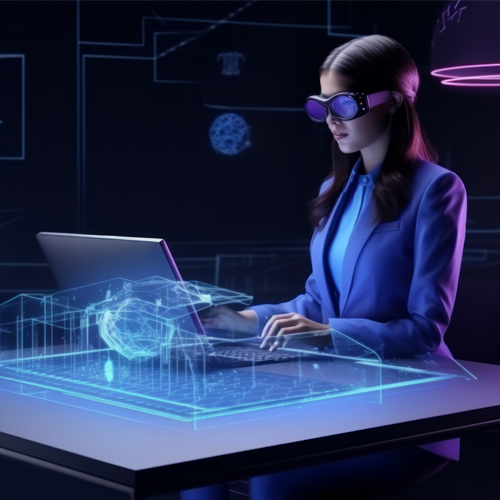As we venture further into 2025, the intersection of artificial intelligence (AI) and software development continues to evolve at an astonishing pace. These advancements are not only reshaping how software is created but also transforming industries and enhancing user experiences. This blog highlights key trends that are set to dominate the landscape of AI and software development, offering insights into their implications for businesses and developers alike.
1. AI-Powered DevOps: Streamlining Development Processes
The integration of AI into DevOps practices is revolutionizing the software development lifecycle. AI-powered tools are being utilized to automate various stages of development, from coding and testing to deployment and monitoring. By leveraging machine learning algorithms, these tools can analyze vast amounts of data to identify patterns, predict outcomes, and optimize workflows.
Benefits:
Faster Deployment: Automated testing and continuous integration/continuous deployment (CI/CD) pipelines reduce time-to-market.
Enhanced Quality Assurance: AI can detect bugs and vulnerabilities earlier in the development process, leading to higher-quality software.
Predictive Analytics: By analyzing historical data, AI can forecast potential issues before they arise, allowing teams to proactively address them.
This trend is making DevOps more efficient and responsive, enabling organizations to deliver better products faster.
2. Natural Language Processing (NLP) Advancements
Natural Language Processing (NLP) is experiencing significant advancements that are enhancing user interactions with software applications. In 2025, we expect to see more sophisticated NLP models that can understand context, sentiment, and intent with greater accuracy. This evolution will lead to improved conversational interfaces, chatbots, and virtual assistants.
Key Impacts:
Improved User Experience: Applications will provide more intuitive interactions, making it easier for users to find information and complete tasks.
Enhanced Accessibility: NLP technologies can help bridge communication gaps for users with disabilities or language barriers.
Data Insights: Businesses can leverage NLP to analyze customer feedback and sentiment across various platforms, informing product development and marketing strategies.
As NLP continues to advance, it will play a crucial role in creating more engaging and responsive software solutions.
3. Blockchain Technology in Software Development
Blockchain technology is gaining traction as a secure method for managing data integrity in software applications. In 2025, we expect more developers to incorporate blockchain into their projects, particularly in sectors like finance, supply chain management, and healthcare. The decentralized nature of blockchain enhances security while providing transparency in transactions.
Advantages:
Increased Security: Blockchain’s cryptographic features make it difficult for unauthorized parties to alter data.
Transparency: All transactions are recorded on a public ledger, enhancing accountability among stakeholders.
Smart Contracts: Developers can create self-executing contracts that automatically enforce terms when conditions are met, streamlining processes.
By integrating blockchain technology into software development, organizations can enhance trust and security in their applications.
4. Focus on Cybersecurity in AI Development
As AI technologies become more prevalent, the need for robust cybersecurity measures is paramount. In 2025, organizations will prioritize security protocols specifically designed for AI systems to protect against threats such as adversarial attacks and data breaches. This focus on cybersecurity will shape how AI solutions are developed and deployed.
Key Strategies:
Secure Development Practices: Implementing security measures throughout the software development lifecycle (SDLC) ensures vulnerabilities are addressed early.
AI for Cybersecurity: Leveraging AI to monitor networks in real-time can help identify potential threats before they escalate.
Regulatory Compliance: As regulations surrounding data protection become stricter, organizations will need to ensure their AI systems comply with legal standards.
By prioritizing cybersecurity in AI development, organizations can safeguard their assets while maintaining user trust.
5. The Growing Importance of Data Privacy
With increasing concerns about data privacy among consumers and regulatory bodies alike, software developers must prioritize privacy by design in their applications. In 2025, we expect a stronger emphasis on implementing data protection measures that comply with regulations such as GDPR and CCPA.
Implications for Development:
User Consent Management: Applications must provide clear options for users to manage their data preferences.
Data Minimization: Collecting only the necessary data reduces risks associated with data breaches.
Transparency in Data Usage: Clear communication about how user data is utilized fosters trust between businesses and consumers.
Focusing on data privacy not only ensures compliance but also enhances brand reputation by demonstrating a commitment to protecting user information.
Conclusion
The trends shaping AI and software development in 2025 highlight a transformative era characterized by innovation and responsibility. From AI-powered DevOps enhancing efficiency to the integration of blockchain technology ensuring security, businesses must adapt to these changes to thrive in a competitive landscape. By embracing advancements such as NLP improvements, heightened cybersecurity measures, and a commitment to data privacy, organizations can create robust solutions that meet the evolving needs of users while fostering trust and transparency.
Staying ahead of these trends will empower businesses not only to enhance operational efficiency but also to drive sustainable growth as they navigate the complexities of an increasingly digital world.

